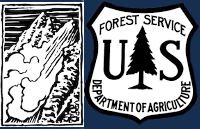The surface evolved throughout the day, so we must continue tracking its progression. We found surface hoar in the valley of Beehive, where inverted temperatures were the coldest, crusts with near-surface facets below, and some straight near-surface facet—recycled powder, along with thicker crust and wet snow. Photo: GNFAC
Northern Madison
The surface evolved throughout the day, so we must continue tracking its progression. We found surface hoar in the valley of Beehive, where inverted temperatures were the coldest, crusts with near-surface facets below, and some straight near-surface facet—recycled powder, along with thicker crust and wet snow. Photo: GNFAC
Mixed Bag of Surface Conditions in Beehive
We toured Beehive Basin up to the prayer flags and dropped into Bear Basin. We dug one full pit in the starting zone of Tyler's (1m of snow, ECTP28 on basal facets - rough/non-planar fracture) but were primarily looking at surface conditions.
The surface evolved throughout the day, so we must continue tracking its progression. We found surface hoar in the valley of Beehive, where inverted temperatures were the coldest, crusts with near-surface facets below, and some straight near-surface facet—recycled powder, along with thicker crust and wet snow.
The warmer temperatures at higher elevations that came with the inversion are saving us from worse faceting. When we returned to the vehicle, the surface hoar had burned off in the warming temperatures, and others were moist.
Surface conditions will continue to evolve but probably won't get stronger in the coming days. The good news is that the surface is holding up better than I expected.
Recent avalanche activity in Cedar Basin
Recent avalanches noted on the NE-E aprons on cedar mountain. SS-N-R2-3-D2-I These appeared to have possibly happened during the last storm cycle and looked to be isolated to layers within the new old snow interface. I also noted similar activity on the same aspects on the adjacent ridge during our approach.
Recent avalanches noted on the NE-E aprons on cedar mountain. SS-N-R2-3-D2-I These appeared to have possibly happened during the last storm cycle and looked to be isolated to layers within the new old snow interface. I also noted similar activity on the same aspects on the adjacent ridge during our approach.
Recent avalanches noted on the NE-E aprons on cedar mountain. SS-N-R2-3-D2-I These appeared to have possibly happened during the last storm cycle and looked to be isolated to layers within the new old snow interface. I also noted similar activity on the same aspects on the adjacent ridge during our approach.
Recent avalanche activity in Cedar Basin
Recent avalanches noted on the NE-E aprons on cedar mountain. SS-N-R2-3-D2-I These appeared to have possibly happened during the last storm cycle and looked to be isolated to layers within the new old snow interface. I also noted similar activity on the same aspects on the adjacent ridge during our approach.
Jan 24, Buck Ridge... We dug on an E facing slope at 9,400'. Snow depth was 155cm (5 feet) and we had an ECTN12 on the surface hoar layer 10" down. Photo GNFAC
Forecast link: GNFAC Avalanche Forecast for Sun Jan 26, 2025
